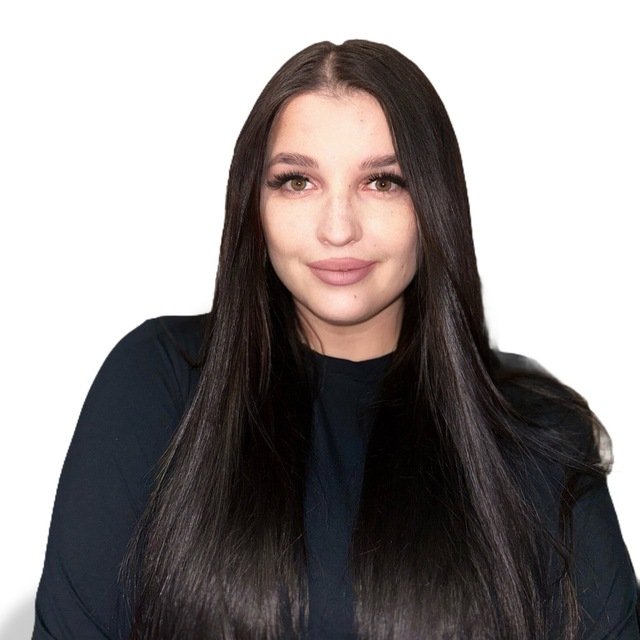
5 Key Metrics for Measuring Influencer ROI in the Beauty Industry
- Introduction
- 1. Engagement Rate
- 2. Conversion Rate
- 3. Cost Per Acquisition (CPA)
- 4. Return on Ad Spend (ROAS)
- 5. Audience Quality & Brand Sentiment
- Conclusion
- FAQs
- 1. What is the best way to track influencer-driven sales?
- 2. How can I tell if an influencer’s audience is authentic?
- 3. What is a good engagement rate for beauty influencers?
- 4. How do I reduce my influencer marketing costs while maintaining effectiveness?
- 5. How do I measure brand awareness impact from influencer marketing?
Introduction
This article unveils five pivotal metrics for beauty brands to gauge Influencer ROI. With these tools, brands can navigate the sparkling world of partnerships. Discover how to assess genuine value beyond the glitzy façade. Each metric shines a light on effectiveness and engagement, ensuring clarity in investments. These insights help brands improve their partnerships and thrive in a competitive market.
Influencer marketing is a key tool for beauty brands. It helps them connect with engaged audiences and boost sales. Measuring the return on investment (ROI) of these campaigns is essential. This ensures they are effective. By understanding key performance indicators (KPIs), brands can optimize their strategies. Ultimately, this leads to maximizing revenue.
1. Engagement Rate
Why It Matters
Engagement rate is one of the most critical influencer performance metrics. It measures how much followers interact with an influencer’s content. This includes likes, comments, shares, and saves.
How to Calculate It
Engagement Rate = ((Likes + Comments + Shares + Saves) ÷ Total Followers) × 100
Ideal Benchmarks in the Beauty Industry
- Micro-influencers (10K-50K followers): 3-5% engagement rate
- Mid-tier influencers (50K-500K followers): 1.5% – 3% engagement rate
- Macro-influencers (500K+ followers): 1-2% engagement rate
How to Improve Engagement Rates
- Collaborate with influencers who have authentic audience engagement
- Encourage interactive content like polls, Q&A, and giveaways
- Focus on video content, as it tends to have higher engagement
2. Conversion Rate
Why It Matters
Engagement is essential, but conversions (purchases, sign-ups, or downloads) directly impact revenue. Tracking conversion rates helps brands see if an audience is acting on an influencer’s content.
How to Calculate It
Conversion Rate = (Total Conversions ÷ Total Clicks) × 100
Ways to Track Conversions
- Affiliate links and promo codes: Giving influencers unique discount codes helps track conversions.
- UTM parameters: Tracking links with UTM tags provide precise analytics
- Landing page tracking: Creating dedicated landing pages for influencer-driven traffic
Optimization Tips
- Ensure that influencers align with your target demographic
- Use compelling CTAs (Call-to-Actions) in captions and stories
- Offer exclusive incentives to drive urgency
3. Cost Per Acquisition (CPA)
Why It Matters
Cost Per Acquisition (CPA) shows brands how much it costs to gain a new customer through influencer marketing. A lower CPA indicates a cost-effective campaign.
How to Calculate It
CPA equals Total Campaign Spend divided by Total Conversions.
Industry Standards
- Lower CPA = Higher ROI
- The beauty industry usually sees CPAs of $10 to $50. This depends on the influencer tier and product price.
Reducing CPA
- Partner with highly relevant influencers who already resonate with your target market
- Optimize influencer content style to make it more conversion-driven
- Experiment with different influencer types (e.g., nano vs. macro) to find the best CPA
4. Return on Ad Spend (ROAS)
Why It Matters
ROAS shows how much money a brand makes for each dollar it spends on influencer marketing. It helps with budget allocation and performance comparison across different campaigns.
How to Calculate It
ROAS is the revenue generated from an influencer campaign divided by the total spend on the influencer campaign.
Beauty Industry ROAS Benchmarks
- Average ROAS: 3x-5x (for every $1 spent, brands earn $3-$5)
- High-performing campaigns: 6x+ ROAS
How to Improve ROAS
- Collaborate with influencers who have a proven track record of conversions
- Use whitelisting and paid amplification to extend reach beyond organic followers
- Optimize influencer posts for shoppable experiences with direct purchase links
5. Audience Quality & Brand Sentiment
Why It Matters
Not all influencer audiences are genuine or relevant. Many influencers have fake followers or low-quality engagement, which can impact ROI. Evaluating audience authenticity and brand sentiment ensures that partnerships drive meaningful impact.
How to Analyze It
- Fake Follower Detection: Use tools like HypeAuditor, Social Blade, or Modash
- Demographic Fit: Ensure the influencer’s audience matches your target customers. They should be the right age, location, and have similar interests.
- Brand Sentiment Analysis: Track comments and mentions to see responses to influencer promotions.
Improving Audience Quality and Sentiment
- Vet influencers before partnerships using in-depth analytics tools
- Focus on influencers with high organic engagement rather than just follower count
- Check customer feedback and product reviews post-campaign
Conclusion
To measure Influencer ROI in the beauty industry, a data-driven approach is essential. Brands can track five key metrics: Engagement Rate, Conversion Rate, CPA, ROAS, and Audience Quality and Sentiment. By doing this, they make smarter investment decisions and maximize their marketing impact.
Key Takeaways:
✔️ Engagement Rate shows your audience’s interaction with you.
✔️ Conversion Rate measures actual sales and sign-ups.
✔️ CPA helps you maximize your budget.
✔️ ROAS calculates your revenue from working with influencers.
✔️ Audience Quality & Sentiment ensures your partnerships are valuable.
By tracking these metrics, beauty brands can improve their influencer marketing. They can boost ROI and stay ahead in a competitive industry.
FAQs
1. What is the best way to track influencer-driven sales?
Use affiliate links, UTM tracking, and custom promo codes. They are three effective ways to measure conversions from influencers.
2. How can I tell if an influencer’s audience is authentic?
Use tools like HypeAuditor or Social Blade to find fake followers and assess engagement quality.
3. What is a good engagement rate for beauty influencers?
A strong engagement rate is 3-5% for micro-influencers and 1-2% for macro-influencers.
4. How do I reduce my influencer marketing costs while maintaining effectiveness?
Partner with small, targeted influencers. Optimize your content to drive sales. Use tracking data to improve your campaigns.
5. How do I measure brand awareness impact from influencer marketing?
Track your brand’s online presence. Use tools like Sprout Social and Brandwatch to check brand mentions, hashtag usage, and social media reach.
Recent Posts
-
 Why Video Content is Dominating Beauty Influencer Marketing in 2025March 6, 2025/0 Comments
Why Video Content is Dominating Beauty Influencer Marketing in 2025March 6, 2025/0 Comments -
 Why Micro-Influencers Are the Future of Beauty MarketingFebruary 6, 2025/
Why Micro-Influencers Are the Future of Beauty MarketingFebruary 6, 2025/ -
 Why Influencer Marketing is a Game-Changer for Beauty BrandsDecember 13, 2024/
Why Influencer Marketing is a Game-Changer for Beauty BrandsDecember 13, 2024/

